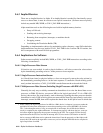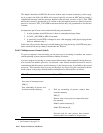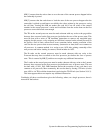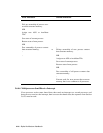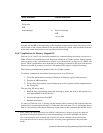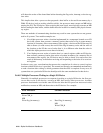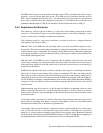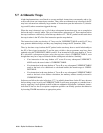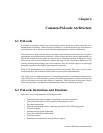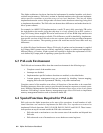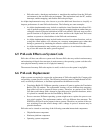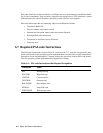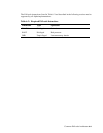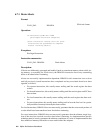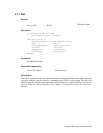5–30 Alpha Architecture Handbook
5.7 Arithmetic Traps
Alpha implementations are allowed to execute multiple instructions concurrently and to for-
ward results from one instruction to another. Thus, when an arithmetic trap is detected, the PC
may have advanced an arbitrarily large number of instructions past the instruction T (calculat-
ing result R) whose execution triggered the trap.
When the trap is detected, any or all of these subsequent instructions may run to completion
before the trap is actually taken. The set of instructions subsequent to T that complete before
the trap is taken are collectively called the trap shadow of T. The PC pushed on the stack when
the trap is taken is the PC of the first instruction past the trap shadow.
The instructions in the trap shadow of T may use the UNPREDICTABLE result R of T, they
may generate additional traps, and they may completely change the PC (branches, JSR).
Thus, by the time a trap is taken, the PC pushed on the stack may bear no useful relationship to
the PC of the trigger instruction T, and the state visible to the programmer may have been
updated using the UNPREDICTABLE result R. If an instruction in the trap shadow of T uses
R to calculate a subsequent register value, that register value is UNPREDICTABLE, even
though there may be no trap associated with the subsequent calculation. Similarly:
• If an instruction in the trap shadow of T stores R or any subsequent UNPREDICT-
ABLE result, the stored value is UNPREDICTABLE.
• If an instruction in the trap shadow of T uses R or any subsequent UNPREDICTABLE
result as the basis of a conditional or calculated branch, the branch target is UNPRE-
DICTABLE.
• If an instruction in the trap shadow of T uses R or any subsequent UNPREDICTABLE
result as the basis of an address calculation, the memory address actually accessed is
UNPREDICTABLE.
Software can follow the rules in Section 4.7.7.3 to reliably bound how far the PC may advance
before taking a trap, how far an UNPREDICTABLE result may propagate or continue from a
trap by supplying a well-defined result R within an arithmetic trap handler. Arithmetic instruc-
tions that do not use the /S exception completion qualifier can reliably produce that behavior
by inserting TRAPB instructions at appropriate points.



